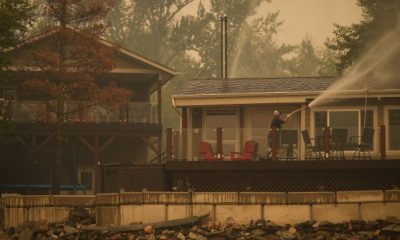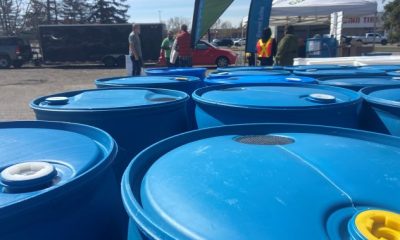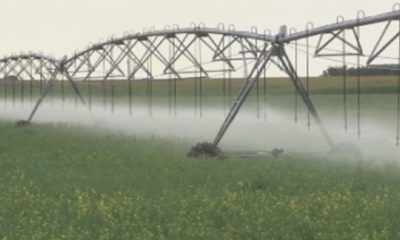General News
‘Mega drought’ leaves millions in California facing water shortages

California is known for its sunshine all year round – but now the Golden state has been hit with a mega drought, caused by the combination of climate change and the over-extraction of groundwater used for crop irrigation.
The groundwater crisis is most extreme in the San Joaquin Valley, the country’s most productive agricultural region, where farmers rely more heavily on groundwater because they aren’t getting much water from the state’s depleted reservoirs.
But it is now affecting the lives of everyday civilians, like in Fairmead in California’s Madera Country.
“Here in Fairmead there are families who don’t have access to running water right now because they have dry domestic wells, haven’t been able to get emergency assistance from the state and are in a really tough spot, having to use water from buckets to live off of, to shower, to cook, to clean, to wash dishes,” says Madeline Harris, from the Leadership Council for Justice and Accountability.
More than 1,200 wells have run dry this year statewide, a 57% increase over the same period last year, according to the California Department of Water Resources. By contrast, fewer than 100 dry wells were reported annually in 2018, 2019 and 2020.
US Drought Monitor also says more than 94% of the state is experiencing severe or extreme drought.
“In a lot of places, people are pumping not just like they were before, but in fact more than they would during a wet year because they’re not getting the surface water. And as a result, you can see groundwater tables decline pretty precipitously during drought,” says Andrew Ayres, a water researcher at the Public Policy Institute of California.
Most try to deal with the problem with new, deeper wells, but that can exacerbate the problem.
Those struggling can get help from an emergency state scheme that provides bottled water as well as storage tanks regularly filled by water delivery trucks.
The state also offers money to replace dry wells, but there’s a long wait to get a new one.























